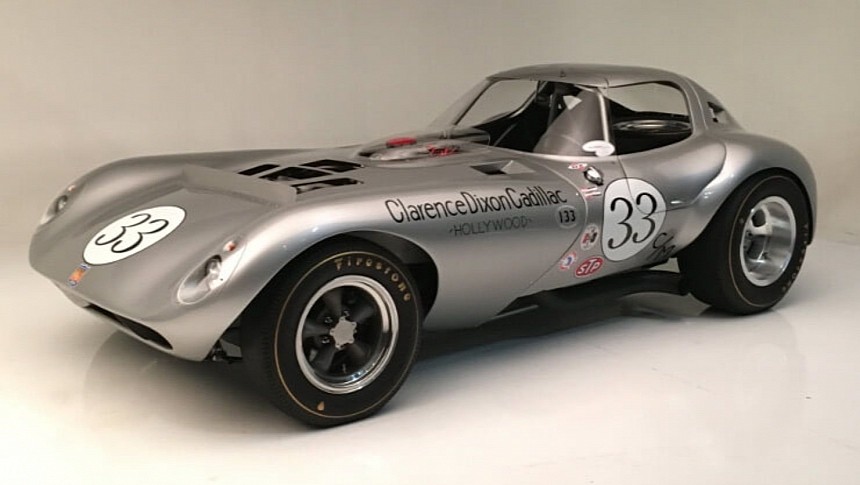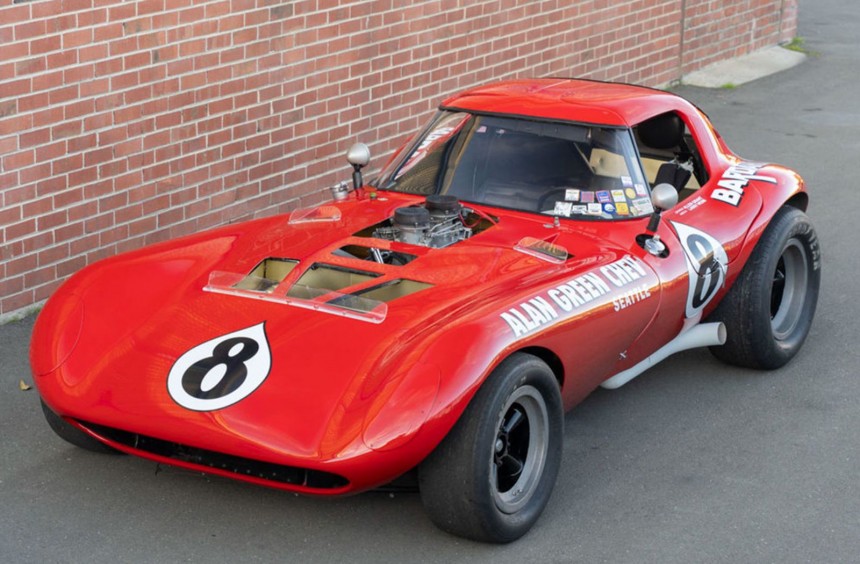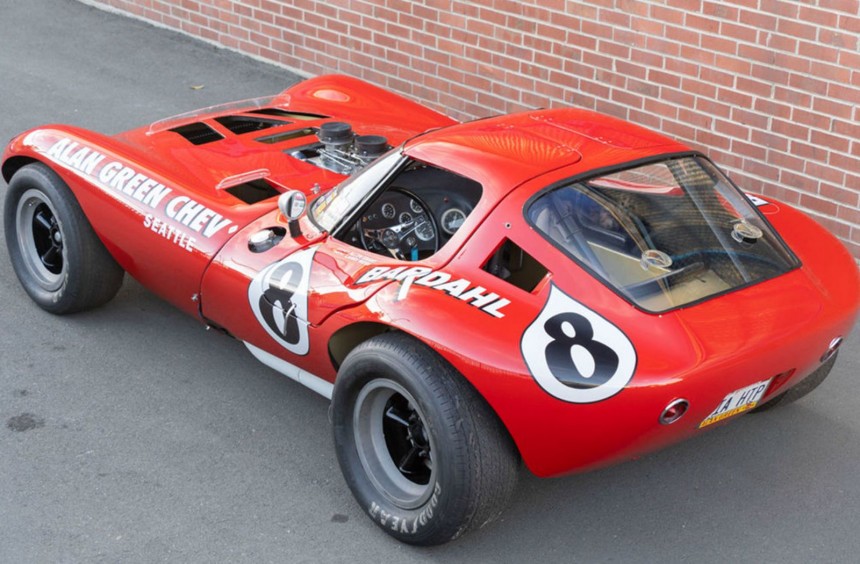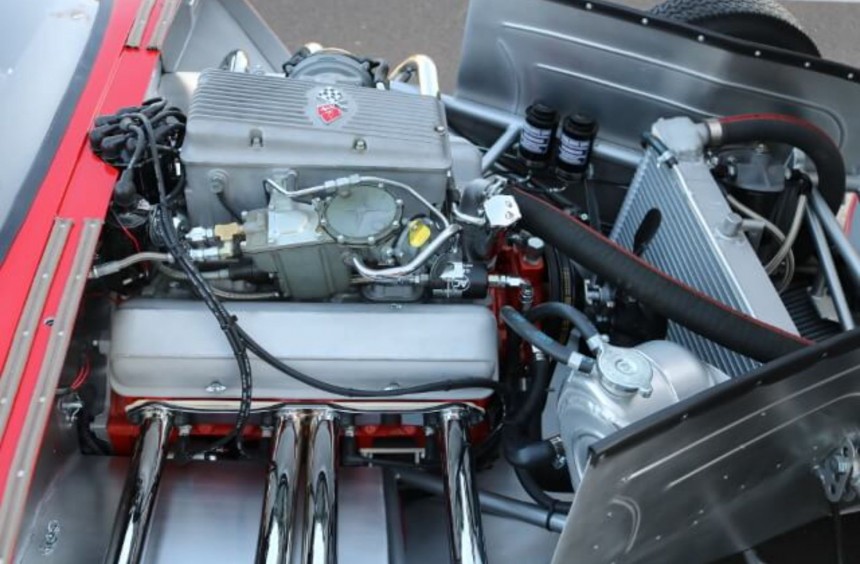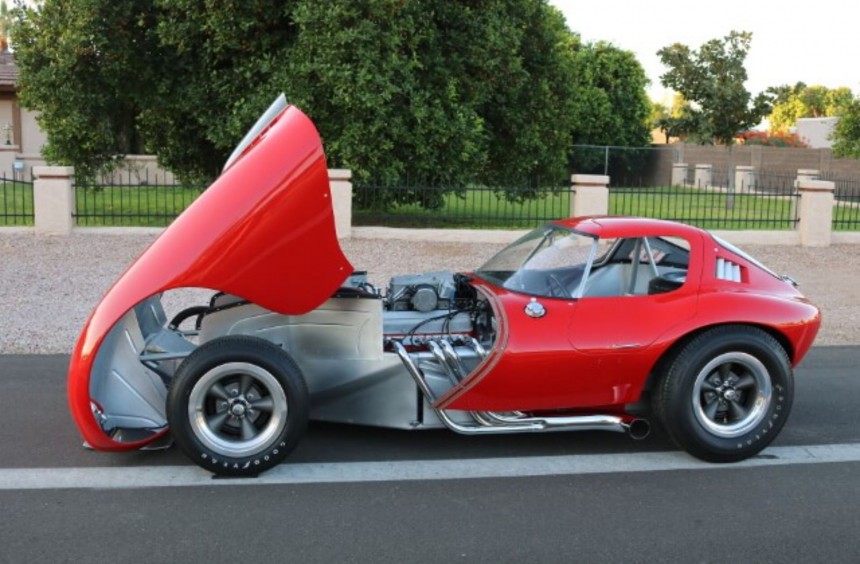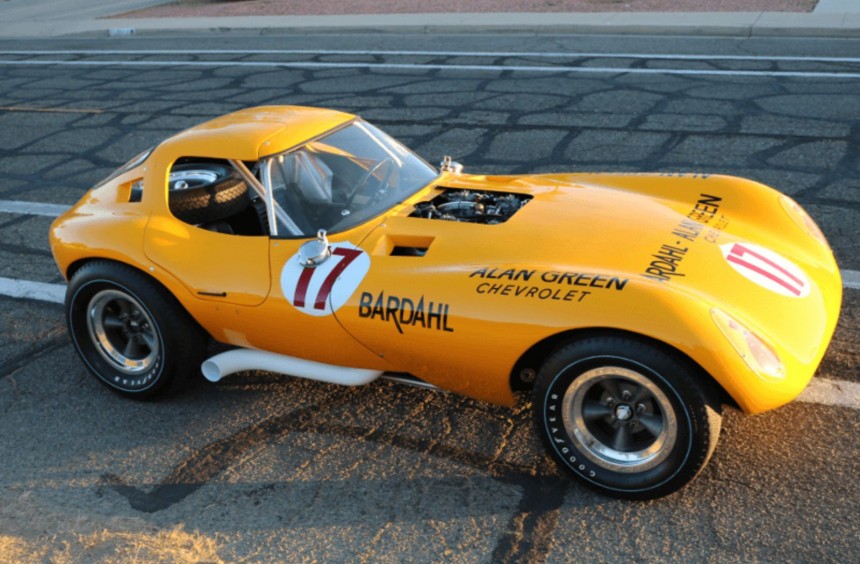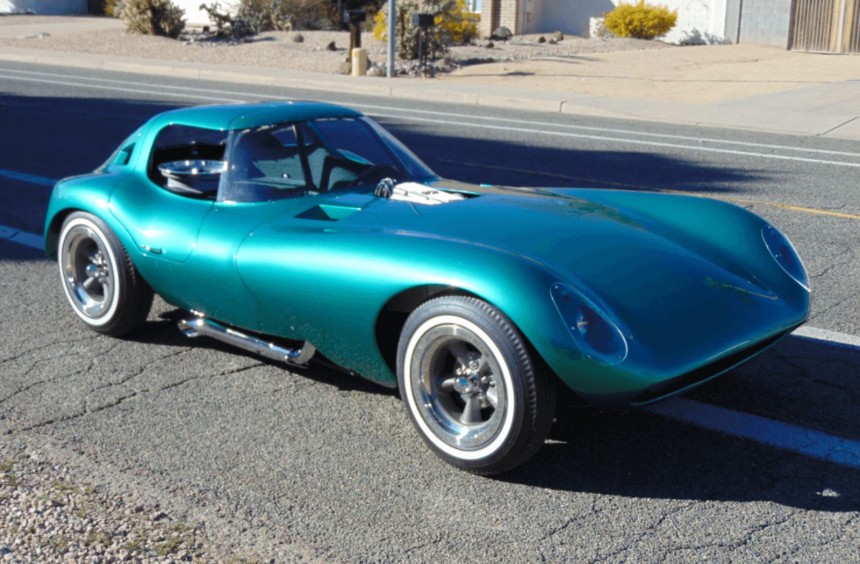Though never as successful nor famous as the Cobra, the mid-engine Cheetah was one of the most fascinating limited-series sports cars developed in the US during the 1960s.
If you're a car enthusiast with a soft spot for 1960s American performance, you surely know how Carroll Shelby transformed a British sports car into one of the most iconic American rides of all time.
But did you know that Shelby initially wanted to use Chevy engines and ended up equipping the Cobra with Ford V8s only after he failed to strike a deal with the Bowtie brand?
Yes, that's how the Cobra story started. Moreover, the legendary Texan helped create one of the rarest, most impressive Corvette spin-offs: the Scaglietti Corvette.
Shelby wasn't the only self-taught American engineer who wanted to create a memorable American performance car with a Chevy V8 heart.
A California native, Bill Thomas started tuning and prepping race versions of Chevy models during the second half of the 1950s while working for C S Mead Motors Co.
By the early 1960s, he founded Bill Thomas Race Cars and became one of the country's most respected Chevy performance wizards.
Even GM took note of Thomas' expertise and employed it for several motorsport-related projects, as well as the development of production models like the Corvair or Chevy II.
In 1962, the Shelby Cobra took to the streets and race tracks with the Corvette in its crosshairs.
From the start, the Cobra proved to be a legit contender for the title of America's best sports car, but while GM wasn't worried, Thomas was since drivers of his race-prepped Corvettes were seeing too many Cobra rear ends in front of them.
Therefore, the performance guru decided to follow in Shelby's footsteps and build his own lightweight sports car - albeit one that was 100 percent American.
Determined to succeed where Carroll Shelby failed, Thomas pitched his idea to Vince Piggins, the product performance manager at Chevrolet.
Piggins liked the idea but asked for a functional concept car before deciding whether or not to embark on a Shelby/Ford-style collaboration.
After receiving positive feedback, Thomas managed to secure finances for the project and immediately went to work.
The initial concept car, eventually dubbed Cheetah, was designed by Thomas with help from his lead fabricator, Don Edmunds, who handled the bulk of manufacturing.
Legend has it that, after creating some simple sketches and getting the thumbs up from Thomas, Edmunds drew up the actual dimensions of the car on the shop's floor using a piece of chalk, then started fabricating the chassis.
The structure was manufactured from TIG-welded Chromoly steel tubes and received Chevy hardware from the shop's parts bin, such as NASCAR-spec drum brakes or the Corvette's rear suspension assembly.
While building the chassis, Edmunds also created a wooden buck to fabricate the curvaceous body, complete with gullwing doors.
The initial concept and another Cheetah received aluminum bodies manufactured by third-party companies, while fiberglass panels were used for subsequent units to reduce production costs.
Ever since the 1950s, Chevrolet experimented with mid-engine setups thanks to the determination of Zora Arkus-Duntov.
Thomas and Edmunds were also proponents of the mid-engine configuration. Still, instead of placing the V8 behind the passenger compartment and linking it with a transaxle, they went for an extreme setup.
As with the C2 Corvette from which it was sourced, the 327-ci (5.4-liter) small-block was mounted in a front-mid position. However, it sat very close to the center of the chassis.
Consequently, the V8 was parallel with the driver's and passenger's legs, requiring custom headers that ran over tight footwells.
Even crazier, the powertrain was so close to the rear axle that it didn't require a driveshaft. Instead, the gearbox was mated to the differential using nothing more than a conventional U joint.
The car weighed only about 1,500 pounds (680 kg) when completed. To put it into perspective, a C2 Corvette coupe equipped with the same engine was more than twice as heavy.
Add 450 to 500 hp courtesy of the Thomas-tuned 327 engine, and you have a power-to-weight ratio in the same ballpark as today's supercars.
The Cheetah was blistering fast, reportedly reaching a top speed of 215 mph (346 kph) during tests. It also had a better power-to-weight ratio than the Mk I and Mk II Cobras, but it never got to go head-to-head with Shelby's sports car.
The initial concept was sent to Detroit, where Piggins and a select team of engineers were waiting to inspect it. Although the feedback was positive, Piggins failed to convince the division's top brass to back the project.
Nevertheless, he encouraged Thomas to continue development and prove the car's superiority on the race track.
Thomas and his team did just that, but since the car was designed as a proof of concept for a street-legal homologation special and not a thoroughbred race car, a series of problems occurred.
The main problem was chassis flex, which negatively impacted handling. Furthermore, the lack of vents caused the engine to overheat, and the temperature inside the cockpit was hard to bear after prolonged high-RPM operation due to the placement of the exhaust headers.
While the team addressed some of the issues to some extent, the Cheetah wasn't allowed to compete directly against the Cobra in SCCA stock classes because of its low production numbers.
To make matters worse, in 1964, the minimum number of production cars required for homologation increased from 500 to 1,000 units.
Still, Thomas didn't give up and began developing a thoroughly improved, long-tail version called Super Cheetah. Unfortunately, Chevrolet temporarily withdrew its support for factory-backed programs, ending its collaboration with Thomas.
To add insult to injury, a fire broke out in the fall of 1965, destroying a large part of the shop. In the end, Bill Thomas was forced to drop the project before being able to finish the Super Cheetah.
Though the official number of original Cheetas is still debatable, estimates put around ten complete cars. Additionally, about ten bare frames and fiberglass panels for approximately twenty bodies were completed before the project was canned.
Even if it never reached its full potential, the Bill Thomas Cheetah remains one of the most intriguing American sports cars of the 1960s and deserves to be remembered.
If you want to see one of the few surviving examples in its natural habitat, we recommend watching the video below by Goodwood Road & Racing.
But did you know that Shelby initially wanted to use Chevy engines and ended up equipping the Cobra with Ford V8s only after he failed to strike a deal with the Bowtie brand?
Yes, that's how the Cobra story started. Moreover, the legendary Texan helped create one of the rarest, most impressive Corvette spin-offs: the Scaglietti Corvette.
Shelby wasn't the only self-taught American engineer who wanted to create a memorable American performance car with a Chevy V8 heart.
A California native, Bill Thomas started tuning and prepping race versions of Chevy models during the second half of the 1950s while working for C S Mead Motors Co.
By the early 1960s, he founded Bill Thomas Race Cars and became one of the country's most respected Chevy performance wizards.
Even GM took note of Thomas' expertise and employed it for several motorsport-related projects, as well as the development of production models like the Corvair or Chevy II.
Creating a Cobra slayer
From the start, the Cobra proved to be a legit contender for the title of America's best sports car, but while GM wasn't worried, Thomas was since drivers of his race-prepped Corvettes were seeing too many Cobra rear ends in front of them.
Therefore, the performance guru decided to follow in Shelby's footsteps and build his own lightweight sports car - albeit one that was 100 percent American.
Determined to succeed where Carroll Shelby failed, Thomas pitched his idea to Vince Piggins, the product performance manager at Chevrolet.
Piggins liked the idea but asked for a functional concept car before deciding whether or not to embark on a Shelby/Ford-style collaboration.
Alegidly sketched using chalk on the shop's floor
The initial concept car, eventually dubbed Cheetah, was designed by Thomas with help from his lead fabricator, Don Edmunds, who handled the bulk of manufacturing.
Legend has it that, after creating some simple sketches and getting the thumbs up from Thomas, Edmunds drew up the actual dimensions of the car on the shop's floor using a piece of chalk, then started fabricating the chassis.
The structure was manufactured from TIG-welded Chromoly steel tubes and received Chevy hardware from the shop's parts bin, such as NASCAR-spec drum brakes or the Corvette's rear suspension assembly.
While building the chassis, Edmunds also created a wooden buck to fabricate the curvaceous body, complete with gullwing doors.
The initial concept and another Cheetah received aluminum bodies manufactured by third-party companies, while fiberglass panels were used for subsequent units to reduce production costs.
One of the most outlandish mid-engine setups ever seen
Thomas and Edmunds were also proponents of the mid-engine configuration. Still, instead of placing the V8 behind the passenger compartment and linking it with a transaxle, they went for an extreme setup.
As with the C2 Corvette from which it was sourced, the 327-ci (5.4-liter) small-block was mounted in a front-mid position. However, it sat very close to the center of the chassis.
Consequently, the V8 was parallel with the driver's and passenger's legs, requiring custom headers that ran over tight footwells.
Even crazier, the powertrain was so close to the rear axle that it didn't require a driveshaft. Instead, the gearbox was mated to the differential using nothing more than a conventional U joint.
A lightweight monster
Add 450 to 500 hp courtesy of the Thomas-tuned 327 engine, and you have a power-to-weight ratio in the same ballpark as today's supercars.
The Cheetah was blistering fast, reportedly reaching a top speed of 215 mph (346 kph) during tests. It also had a better power-to-weight ratio than the Mk I and Mk II Cobras, but it never got to go head-to-head with Shelby's sports car.
Failing to compete against its rival
Nevertheless, he encouraged Thomas to continue development and prove the car's superiority on the race track.
Thomas and his team did just that, but since the car was designed as a proof of concept for a street-legal homologation special and not a thoroughbred race car, a series of problems occurred.
The main problem was chassis flex, which negatively impacted handling. Furthermore, the lack of vents caused the engine to overheat, and the temperature inside the cockpit was hard to bear after prolonged high-RPM operation due to the placement of the exhaust headers.
While the team addressed some of the issues to some extent, the Cheetah wasn't allowed to compete directly against the Cobra in SCCA stock classes because of its low production numbers.
To make matters worse, in 1964, the minimum number of production cars required for homologation increased from 500 to 1,000 units.
An untimely demise
To add insult to injury, a fire broke out in the fall of 1965, destroying a large part of the shop. In the end, Bill Thomas was forced to drop the project before being able to finish the Super Cheetah.
Though the official number of original Cheetas is still debatable, estimates put around ten complete cars. Additionally, about ten bare frames and fiberglass panels for approximately twenty bodies were completed before the project was canned.
Even if it never reached its full potential, the Bill Thomas Cheetah remains one of the most intriguing American sports cars of the 1960s and deserves to be remembered.
If you want to see one of the few surviving examples in its natural habitat, we recommend watching the video below by Goodwood Road & Racing.
